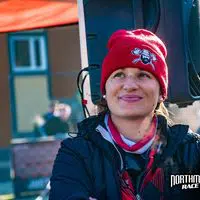New research suggests that physical exercise increases the production of the love hormone: oxytocin.
But first, what is oxytocin and what is its role?
Oxytocin is a natural hormone produced by the brain. After its creation, oxytocin is introduced into the blood system to circulate to different parts of the body. Oxytocin is also produced by other organs besides the brain, including the ovaries, testes and pancreas.
Jewish General Hospital
Oxytocin regulates an entire system dedicated to bonding and attachment: it promotes rapprochement between two people, reduces anxiety and gives a feeling of security. Oxytocin also plays a role in tenderness since it is produced during physical contact, massages and orgasm, for example. This is why it is nicknamed the love hormone!
Who hasn't already experienced that feeling of euphoria that comes over us after a workout? Endorphins, hormones naturally secreted by the brain, have long been associated with being mainly responsible for the feeling of well-being and satisfaction that we feel after physical exercise.

However, multiple research on oxytocin carried out over the years seems to confirm that this hormone also has an impact on the feeling of well-being felt after physical activity.
Personalized Iranian researchers wanted to determine whether physical activity stimulated the production of oxytocin and whether the increase in this production was responsible for the feeling of relaxation and well-being felt after exercise.
They therefore subjected mice to an 8-week swimming training program where they had to swim 10 minutes per day and finally progressed to 30 minutes per day, 5 days per week. Before and after each session, the mice were subjected to a series of tests to measure their level of stress, happiness and socialization.
Not surprisingly, the mice that participated in the swimming training program were more social and more playful compared to the control group and the increase in oxytocin was detectable in both the brain and blood of the mice.
Another study (not on mice this time, but on humans) also agrees with this, but with more nuance given the difficulty of evaluating the different parameters that researchers are able to measure on the human brain.
Subjects were therefore subjected to a high-intensity workout of 4 x 4 minutes on a bicycle with 3 minutes of rest between each repetition. They had to repeat the whole thing a second time, an hour later.
They performed this exercise with catheters inserted into their brachial artery (in the arm) and into their jugular vein, which carries blood from the brain. The goal was to determine the amount of oxytocin present in the blood as it enters and leaves the brain, to determine whether levels in the brain change during exercise. We realize the complexity of such a study on human subjects…
This study allowed researchers to note that although training increases oxytocin levels in the blood, this increase is the same in the artery entering the brain as in the vein leaving it. The assumptions are as follows:
- oxytocin production in the brain does not increase;
- oxytocin production increases so much that it increases levels throughout the body;
- blood from the hypothalamus (where most oxytocin is produced) flows from a different vein rather than the jugular;
- oxytocin is produced elsewhere in the body such as the muscles, the heart or the skin (traces of oxytocin have been discovered in human sweat).

To conclude, researchers are still far from affirming that physical activity stimulates the production of oxytocin, but the recent wave of results which abound in this direction is intriguing. Whatever the case, we cannot deny the benefits that regular physical activity provides on our mental and physical health and the feeling of well-being that invades us once the training is completed, that oxytocin in whether responsible or not.


